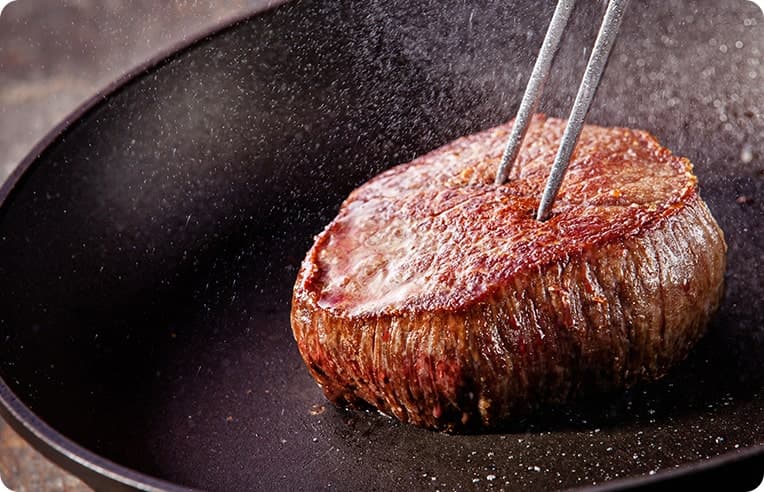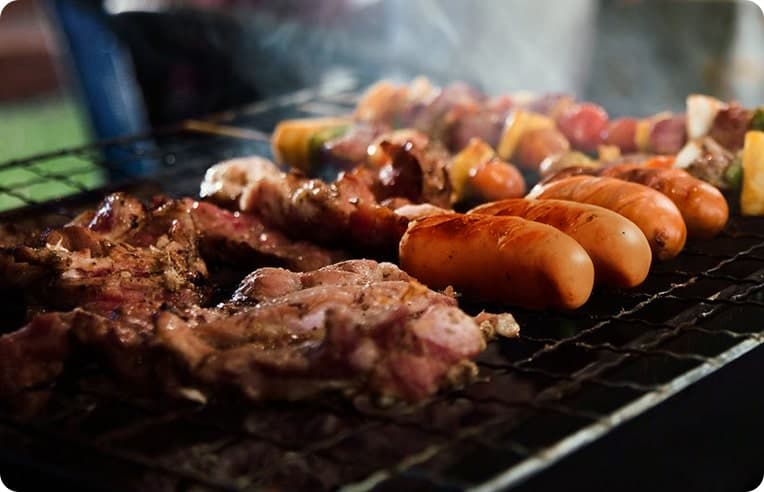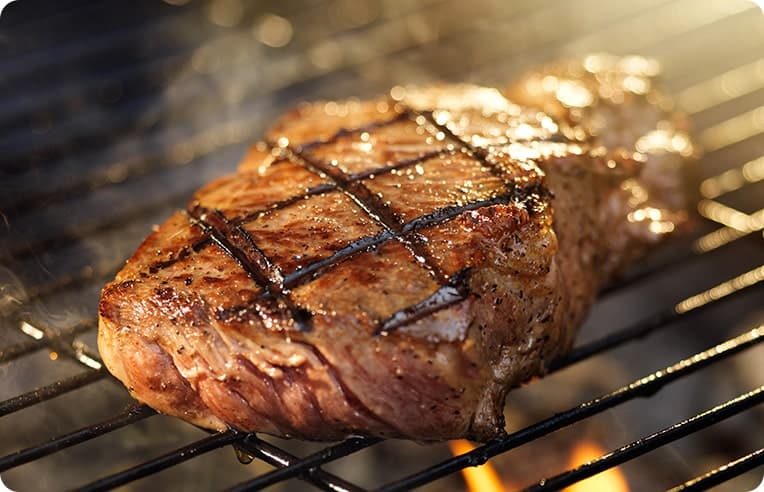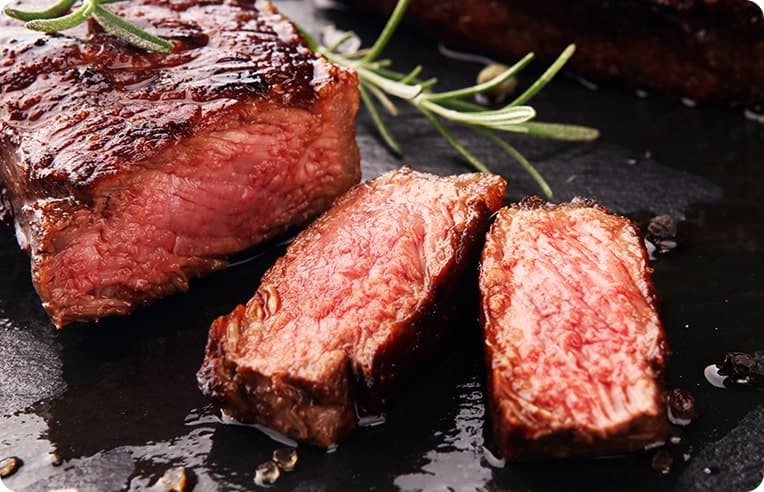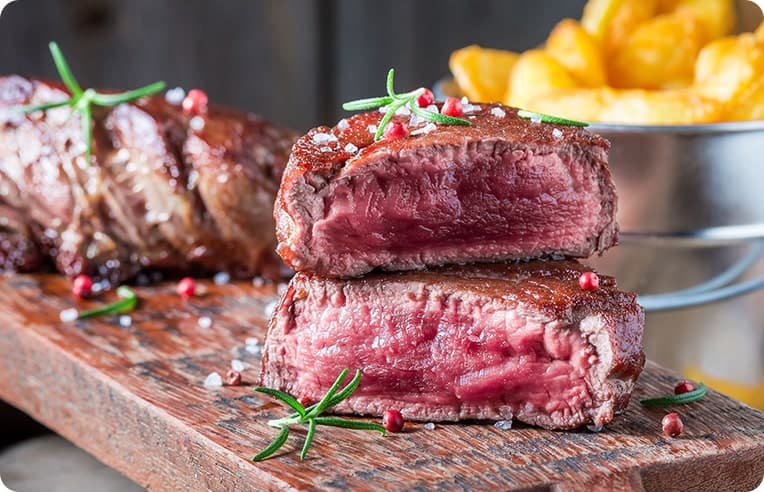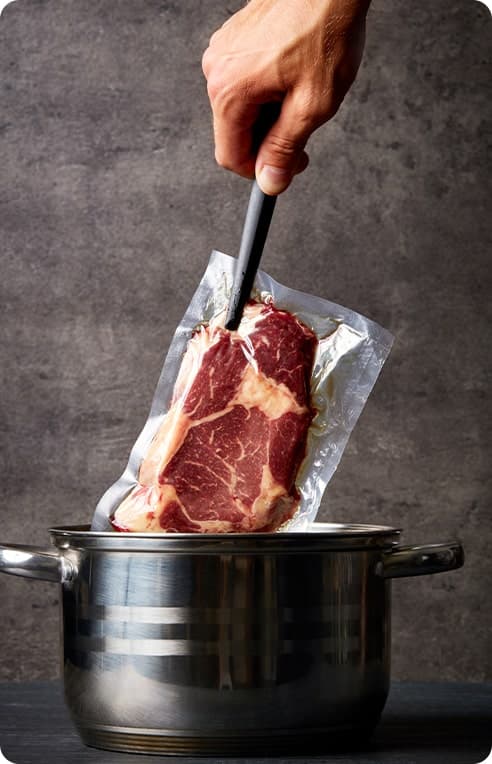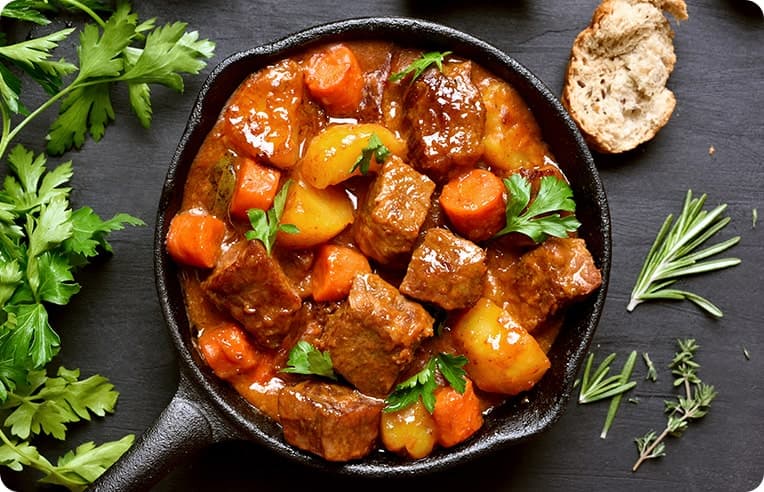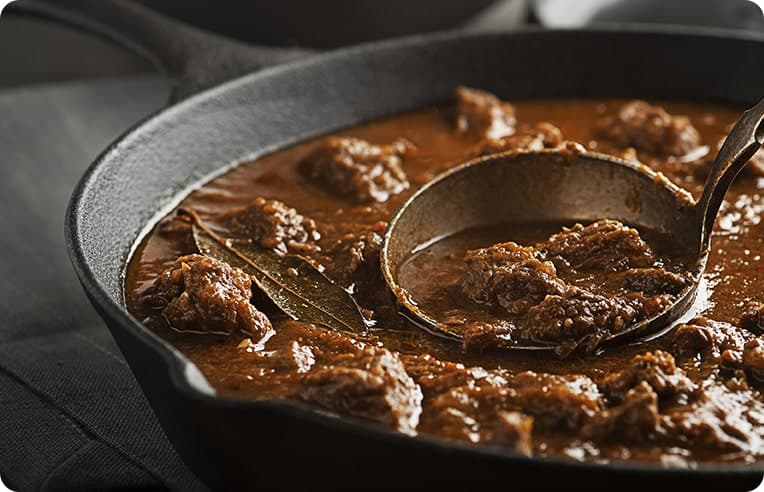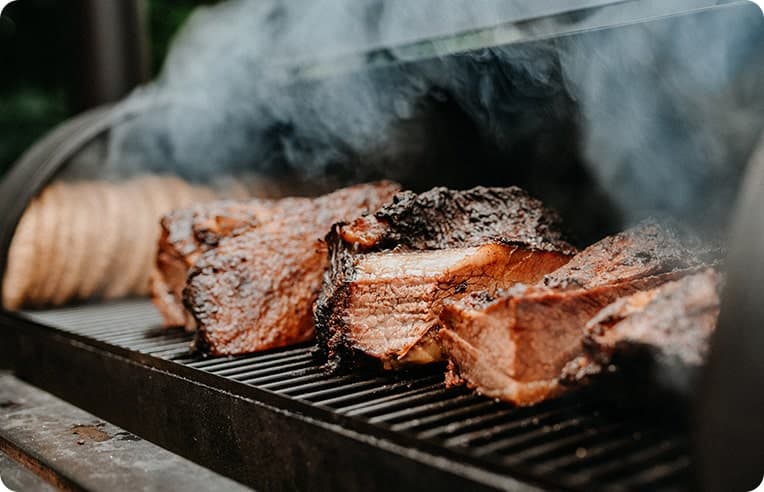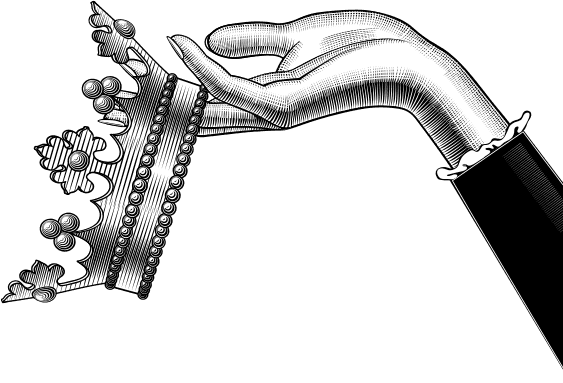TEMPERATURE GUIDE
Rare:
115-125ºF. Cool red center.
Medium Rare:
125-134ºF. Cool pink center.
Medium:
135-144ºF. Warm pink center.
Medium Well:
145-154ºF. Hot pink/grey center.
Well-Done:
155ºF-and beyond. Grey throughout.
SEASONING
Wagyu beef is famous for its outstanding and distinctively delicious flavour so you might want to keep the seasoning to a minimum. But if you choose to season, do it sparingly, with high-quality salt and/or your favourite herbs and spices.
FLIPPING
Flipping steaks frequently creates steaks that heat more evenly from surface to center, reducing the over-cooked grey zone on the interior of steaks.
MARBLE vs FLAMING
When choosing cooking methods for Wagyu beef, keep in mind that high marble score cuts are more apt to flare up on the grill. Often searing, reverse searing and sous vide are best for extremely marbled Wagyu.
BUTTER BASTING
When pan searing and roasting, a healthy nob of butter added to the pan part way through cooking contributes greatly to a fabulous, golden crust. Baste the hot butter over top the steak as the other side cooks and the results are the stuff dreams are made of!
DONENESS
This is about as personal a choice as can be. That being said we often say for higher marble score Wagyu it’s often beneficial to cook to medium. At this point the rich marbling is warm and most luscious.
RESTING
Resting meat after cooking is a critical step to juicy steaks. Resting for a minimum of 5 minutes will mean less moisture remains in your Wagyu after it is cut rather than pooling on your plate. While your steak is off the heat, the internal temperature will typically continue to rise by a few degrees during the initial few minutes of resting. So, consider cooking to just a bit below your desired doneness.
SLICING
If slicing your Wagyu, locate the direction of the muscle grain and slice perpendicular to it. This will make each bite more tender.


